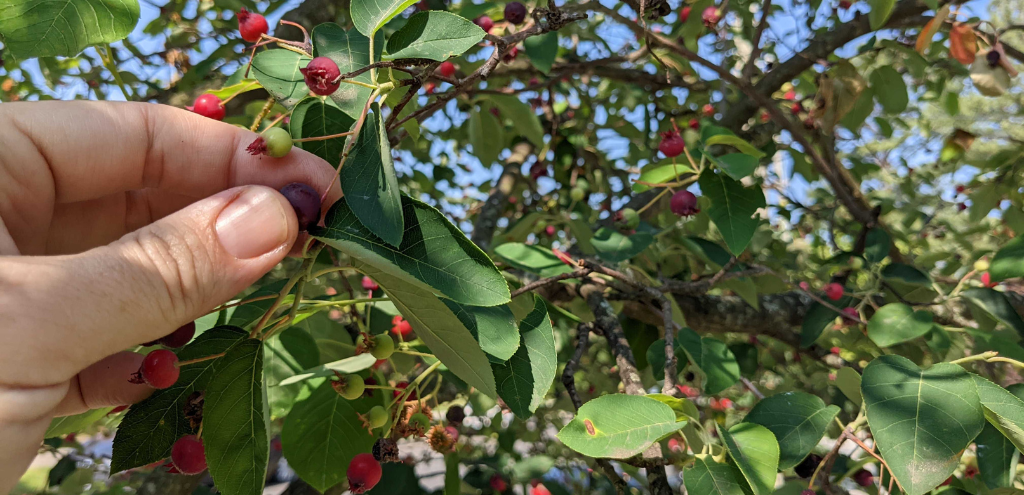THE LEAFLET

Serviceberry Season is Here!
If you’ve taken a walk around DC, then you’ve probably passed a serviceberry tree. It is a popular urban tree due to its durable nature that can handle a variety of soils. They also provide some great ecological benefits. With their early spring flowers, they are able to support emerging pollinators and their early summer berries are a favorite among various bird species and are a delicious treat for humans. Serviceberries are a group of deciduous shrubs and small trees native to North America. They are known for their beautiful white or pinkish flowers, followed by small, round berries that ripen to a dark purplish-blue color.
 Serviceberries are a special treat that can be found on trees right here in the city. We recently spoke to Liam Ulasevich, the managing arborist here at Casey Trees, about why these berries are so loved. “There are only so many native fruits that are edible for humans, so we are lucky to have serviceberries in our lives,” Liam shared. “Not only are they edible but they are very delicious. It depends on the species and cultivar, but they generally taste like a nutty blueberry. I love collecting them for jams, pies, smoothies, and ice cream toppings.”
Serviceberries are a special treat that can be found on trees right here in the city. We recently spoke to Liam Ulasevich, the managing arborist here at Casey Trees, about why these berries are so loved. “There are only so many native fruits that are edible for humans, so we are lucky to have serviceberries in our lives,” Liam shared. “Not only are they edible but they are very delicious. It depends on the species and cultivar, but they generally taste like a nutty blueberry. I love collecting them for jams, pies, smoothies, and ice cream toppings.”
Sadly for serviceberry lovers, it seems as though the easy street snack will need to be avoided this year. Due to the wet season we’ve had, a lot of emerging berries are being spotted with rust. We asked Liam for some clarification on what exactly the rust substance is, “Unfortunately, the orange on some berries is not Tajin [a chili-lime spice mix seasoning] but is a fungal infection called cedar-apple rust. This fungus has a life cycle that alternates host between cedar trees and various members of the rosacea family. The rust proliferates in the berries of serviceberries and causes them to be inedible. It only affects the berries and not the overall tree’s health.”
For preventative measures, people can avoid planting serviceberries in close proximity to cedar trees. However, the fungus can travel miles via wind. Since the tree remains healthy throughout the infection, it’s best to avoid harsh fungicides and hope for better berries the following year.

